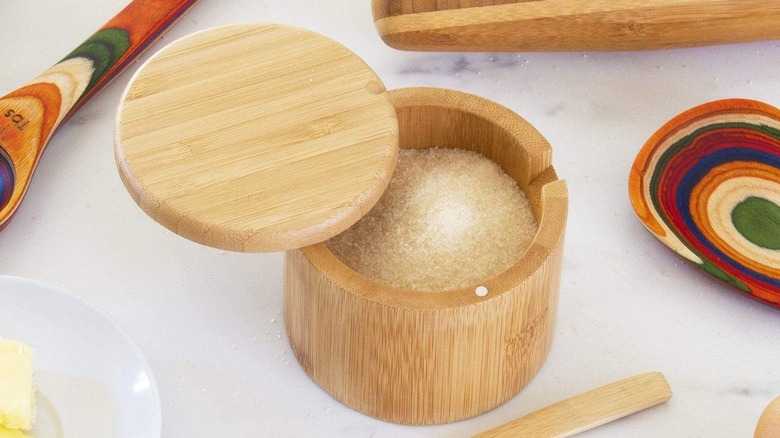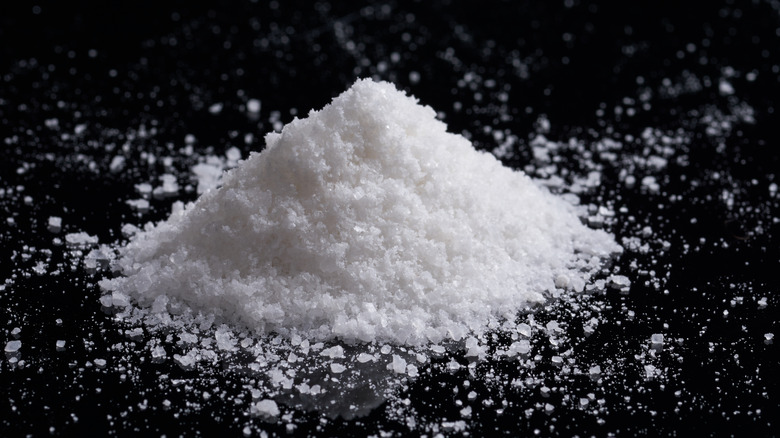What Is A Salt Box?
What happened to just grabbing a salt shaker and sprinkling a bit or a lot of salt onto your food? In modern cooking, we have salt grinders, salt pigs, salt cellars, and ceramic, clay, or olive-wood containers for storing and accessing salt while cooking. Then, there's just the simple concept of a salt box. No complaints here, but it may need some explanation.
With its central role in ancient and modern kitchens, salt deserves the attention it garners. This crucial mineral crowns tables and countertops in a dizzying array of incarnations, from standard table salt to sea salt, Himalayan pink, kosher, Celtic grey, black Hawaiian, flakey finishing salts, and more. It flavors and preserves our foods and, when used in healthy amounts, provides sodium for essential body functions (via Healthline).
So yes, in any form and for its still-flourishing array of centuries-old culinary functions, salt certainly earns a dedicated container. Here's a look at what that mysterious little salt box comprises and why you need one in your kitchen and dining room. (Hint: It's definitely not a supermarket-style cylindrical cardboard tube sporting a pop-up metal spout.)
A salt box allows for better storage, access, and control of your salt
A salt box is a container for storing the various salt incarnations available in today's marketplace. Chefs often interchange the term with salt pigs and salt cellars, which typically come with lids to preserve freshness, protect the salt from moisture and bacteria, and resist the absorption of kitchen odors that could affect the taste.
Materials for salt boxes range from glass to metal, stainless steel, ceramic, clay, and acacia wood. Durable bamboo is also a preferred material, partially because it "allows the salt to breathe" and is a renewable resource, per Totally Bamboo. Some come with magnetic swivel lids for easy access to the salt while cooking; others have a side indention for cradling a matching spoon.
Cooking and finishing salts come in many grain sizes and shapes, including hard crystals, rocks, and flakes, often rendering the basic salt shakers and grinders impractical. A salt box, or countertop cellar, puts that go-to seasoning at your fingertips for easy access. More importantly, it facilitates portion control. Rather than grabbing a salt grinder and "hoping" you crank it the right number of times, a salt box lets you see exactly how much salty goodness is going in your skillet, pot, or directly onto your piled-high dinner plate.
We all know that feeling of laboring over a special meal, only to dash a disastrous amount of salt into the mix. A handy little salt box could fix all that — and might just be your new best friend in the kitchen.

